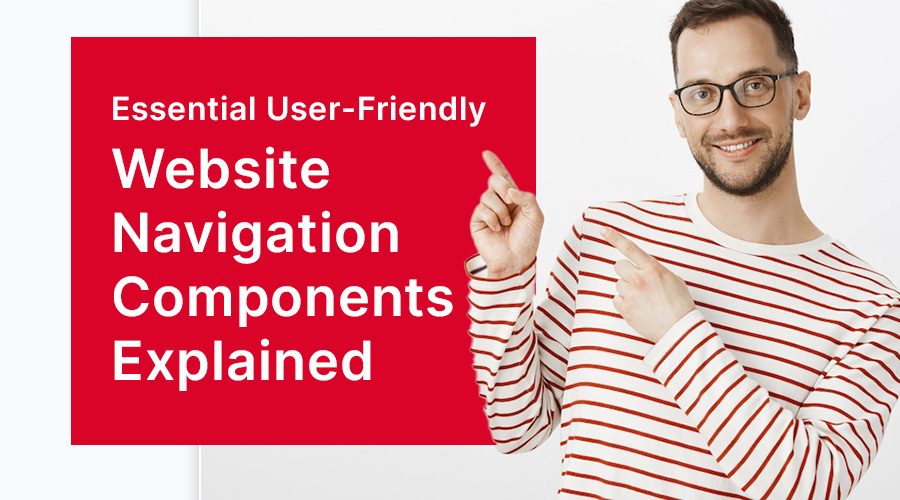Introduction
Ever felt like you were stuck in a never-ending maze, desperately trying to find your way out? That’s exactly what your users may feel like when they land on your website and find its navigation complicated. Frustrating, right? Now, imagine if navigating your website was as easy as flipping through the pages of your favorite book. A dream, isn’t it? That’s the magic of user-friendly site navigation! This guide will be your compass in the wild world of web design, pointing out the key elements of user-friendly website navigation. Let’s make the digital labyrinth a thing of the past, shall we?
Table of Contents
- Understand Your Audience
- Intuitive Site Layout
- Mobile-friendly Navigation
- Consistent Navigation
- Effective Visual Hierarchy
Understand Your Audience
Ever tried buying a gift for someone you barely know? It’s like trying to hit a dartboard blindfolded, isn’t it? Just like gift-giving, designing a user-friendly site navigation begins with understanding your audience. Without knowing their needs, preferences, and behaviors, it’s easy to miss the mark.
Researching your audience can help you hit the bullseye. Surveys, user testing, and website analytics can be powerful tools in gathering this information. You can understand what your users are looking for and how they prefer to navigate. Remember, a well-crafted user journey can turn even the grumpiest of visitors into happy customers.
Intuitive Site Layout
Picture a shopping mall with no store signs, no floor directories, and all the stores jumbled up. Nightmare, isn’t it? This is what a website with a poor layout feels like to a user.
An intuitive site layout guides users where they want to go, just like signs in a shopping mall. It’s about presenting information in a way that’s easy to understand and navigate. A clear and logical structure can make a big difference. You can use elements like a top menu, footer, breadcrumbs, and drop-down menus to make your site easy to navigate. Remember, your users are on a mission – make it easier for them to accomplish it!
Mobile-friendly Navigation
Ever tried reading a broadsheet newspaper on a crowded subway? It’s not just inconvenient; it’s almost impossible. Similarly, trying to navigate a desktop-optimized website on a mobile device can be a real struggle.
Mobile-friendly navigation is no longer just a ‘nice-to-have’ – it’s a must! With more people browsing on mobile devices than ever before, having a mobile-friendly website is key. Make sure your menus are touch-friendly, your content is easy to read, and your site is easy to navigate even on small screens. Remember, the best adventures are the ones without roadblocks!
Consistent Navigation
Ever started a journey with a map, only to find that the landmarks keep changing? That’s frustrating, right? Consistency in website navigation is like having a reliable map for your online adventure.
Consistent navigation involves having the same menu layout, link names, and positioning across your website. This makes it easier for users to find their way around your site. With consistent navigation, your users will feel like seasoned explorers, not lost tourists. Keep in mind that the easier the journey, the more likely it is to end with a satisfied user!
Effective Visual Hierarchy
Ever read a book with all the text in the same size, style, and color? Confusing, isn’t it? This is why we use headlines, subheadlines, and body text. The same principle applies to website navigation.
An effective visual hierarchy can guide users to the most important elements of your website. Larger, bolder elements usually get more attention, while smaller, subtler elements receive less. This way, you can guide users towards the most important actions, like making a purchase or signing up for a newsletter. Remember, in the symphony of web design, visual hierarchy is the conductor guiding the audience’s attention!
Conclusion
Navigating a website shouldn’t feel like solving a Rubik’s Cube. It should be as easy as pie. And just like a well-baked pie has key ingredients, a user-friendly website navigation has key elements: understanding your audience, an intuitive site layout, mobile-friendly navigation, consistent navigation, and effective visual hierarchy.
By incorporating these elements into your website design, you can make the user journey smoother and more satisfying. But hey, if you’re still feeling lost in the digital jungle, Webnobby is here to guide you. We specialize in designing websites that aren’t just attractive, but also easy to navigate. Let us turn your website into an inviting, user-friendly digital space!


